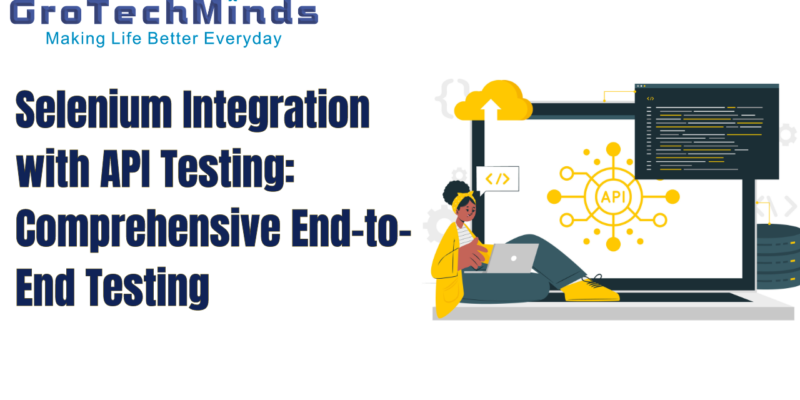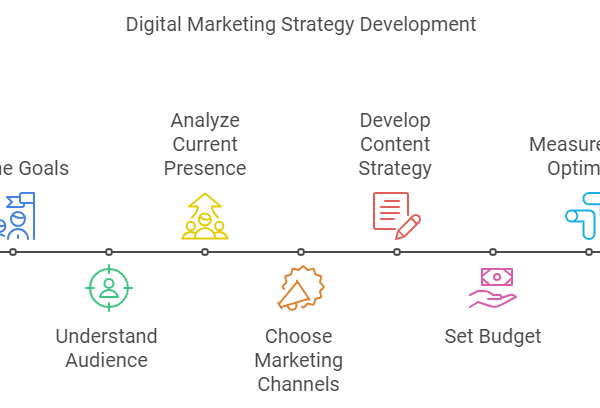
In the continually changing landscape of software development, application quality and stability are critical. To do this, developers use a variety of testing approaches, including automated testing, to detect issues early and maintain high confidence in their code. Selenium is an important component of automated testing for UI testing, and API testing is used to test backend functionality. Integrating Selenium with API testing enables thorough end-to-end testing of an application, including both the frontend and backend.
Understand Selenium and API Testing
Selenium:
Selenium is a popular open-source technology for automating web browsers. It includes a collection of tools and technologies that allow developers to replicate user interactions with web applications across several browsers and platforms. Selenium allows testers to develop scripts that automate operations like clicking buttons, filling out forms, and checking website information. Selenium’s capability makes it a vital tool for testing web applications’ user interfaces (UIs).
API Testing:
API testing checks the functionality and performance of the backend services that power an application. APIs (Application Programming Interfaces) provide communication between software systems, allowing them to exchange data and conduct various activities. API testing entails making calls to API endpoints and evaluating the responses against the expected results. APIs can be directly tested by developers to check that backend services perform properly and meet specifications.
Advantages of Integrating Selenium with API Testing
While Selenium shines at UI testing and API testing specializes in backend validation, merging these two methodologies has various advantages:
- Comprehensive test coverage:
Integrating Selenium with API testing enables end-to-end testing of the complete application stack. Selenium UI tests focus on frontend interactions, whereas API tests evaluate backend functions. By testing both layers at the same time, developers can uncover problems caused by interactions between frontend and backend components.
- Faster test execution:
UI tests frequently require lengthy interactions with online pages, such as navigating many screens or filling out forms. These tests can be time-consuming, particularly when performed across multiple browsers. Backend validation can be offloaded to API tests, which run much faster than UI tests, reducing overall test execution time dramatically.
- Improved test stability:
Changes in page layout, CSS selectors, and dynamic content can all cause UI tests to break. Such modifications can cause UI tests to fail, even if the underlying functionality is still intact. API tests are more robust and reliable when UI interactions and backend validation are separated.
- Early Detection of Issues
Integrating Selenium with API testing allows developers to identify bugs early in the development process. UI testing can reveal frontend flaws, whereas API tests can find backend anomalies. Developers can avoid problems from becoming more serious later in the process by recognizing and resolving them early on.
How to Combine API Testing with Selenium
Coordination of test scripts written in various languages (e.g., Java for API testing and JavaScript for Selenium) and smooth frontend and backend test communication are required when integrating Selenium with API testing. To complete this integration, follow these essential steps:
- Configuring the Test Environment:
Assemble a test environment with the tools and libraries required for Selenium and API testing. Installing WebDriver for Selenium and libraries like Axios or SuperTest for API testing may be necessary for this.
- Script Coordination for Tests:
Write test scripts that cover pertinent test scenarios and, if applicable, share common test data for both Selenium and API testing. In order to replicate end-to-end user interactions with the program, coordinate the scripts’ execution.
- Information Sharing:
Provide means for data exchange between API tests and Selenium tests. For example, whereas API tests could need input parameters produced by UI interactions, UI tests might need to access data produced by API calls for validation.
- Analysis and Reporting:
Put in place a centralized reporting system that combines API and Selenium test results. This makes it possible for developers to swiftly find and fix any errors or inconsistencies throughout the whole application stack.
The Best Methods for Integrating API Testing with Selenium
In order to optimize the efficacy of combining Selenium with API testing, take into account the subsequent recommended practices:
- Prioritize Test Scenarios:
Pay attention to the test scenarios that provide the best value in terms of risk mitigation and coverage. Determine which application paths are crucial, then rank the tests based on how well they exercise these paths.
- Preserve Test Independence:
To make maintenance and debugging simpler, make sure that Selenium and API tests continue to be independent of one another. Steer clear of interest dependencies that could impede scalability or increase fragility.
- utilize Mocking to Isolate Dependencies:
To isolate dependencies and establish controlled test environments, utilize mocking frameworks for testing components that rely on outside services or dependencies.
- CI/CD, or continuous integration and deployment:
Your CI/CD pipeline can be enhanced by integrating Selenium and API testing, which will facilitate fast feedback loops and Automation testing with selenium test execution. This minimizes the need for manual intervention and enables developers to securely deploy changes and identify problems early.
In summary
An effective method of end-to-end testing that combines the benefits of UI and backend validation is to integrate Selenium with API testing. Using API testing for backend validation and Selenium automation testing for frontend interactions allows developers to achieve complete test coverage, faster test execution, better test stability, and early issue discovery. Teams can expedite the integration process and retain a high degree of trust in the caliber and dependability of their apps by adhering to best practices and utilizing Automation test with selenium technologies.











